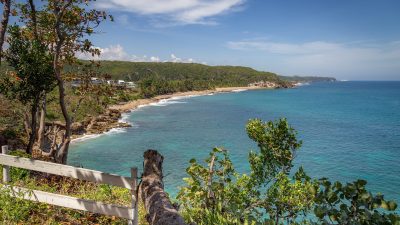The Philippines’ Deadliest Storm of the Decade
1. The Birth of a Monster: How Typhoon Bopha Formed and Gained Strength
Typhoon Bopha, also known locally as Typhoon Pablo, began as a mere disturbance in the warm waters of the Western Pacific Ocean in late November 2012. Initially, it appeared as a low-pressure area, but favourable atmospheric conditions fuelled its rapid intensification. By 30th November, the system had developed into a full-fledged tropical storm, with warm sea surface temperatures and low vertical wind shear allowing it to gather strength quickly.
As it moved westward, Bopha reached Category 5 super typhoon status, with wind speeds surpassing 280 km/h (175 mph). This unprecedented intensity, especially at such a low latitude, baffled meteorologists. The typhoon’s rapid intensification was attributed to anomalous oceanic heat content, which provided an endless energy supply, transforming it into one of the most powerful storms ever recorded in the southern Philippines.
2. The Unstoppable Path: Typhoon Bopha’s Track and Devastation
As Typhoon Bopha barrelled towards the Philippines, the government issued warnings, yet the scale of devastation remained unimaginable. On 3rd December 2012, the storm made its first landfall in Mindanao, a region unaccustomed to such powerful typhoons. Unlike Luzon, which frequently experiences typhoons, Mindanao had not faced a storm of this magnitude in decades.
Upon making landfall, Bopha unleashed torrential rain, fierce winds, and storm surges that wiped out entire communities. The provinces of Davao Oriental and Compostela Valley bore the brunt of the destruction, with houses reduced to rubble, farmlands submerged, and roads completely washed away. As it traversed the archipelago, the typhoon weakened but still caused significant damage in Palawan before exiting the Philippine Area of Responsibility on 9th December 2012.
3. Death, Destruction, and the Grim Statistics
- Death Toll: Over 1,900 people lost their lives, making it one of the deadliest typhoons in Philippine history. Many victims drowned in flash floods or were buried in landslides.
- Injuries: More than 6,000 individuals sustained injuries, ranging from minor wounds to severe fractures and trauma.
- Missing Persons: At least 800 people were reported missing, with many presumed dead due to landslides and flooding.
- Displaced Population: Nearly six million people were affected, with over 230,000 homes destroyed, forcing thousands into overcrowded evacuation centres.
- Economic Cost: The total damage was estimated at $1.7 billion (PHP 43 billion), crippling local economies and pushing many communities into deeper poverty.
- Agricultural Devastation: The typhoon obliterated over 130,000 hectares of farmland, wiping out banana, coconut, and rice plantations—the main sources of livelihood in the affected regions.
4. Why Did Mindanao Suffer So Heavily? The Science Behind the Unusual Impact
Mindanao had long been considered a typhoon-free zone, with most tropical cyclones historically striking Luzon and Visayas. The devastation caused by Bopha raised critical questions: why did such a powerful storm hit Mindanao, and will it happen again?
Scientists attribute this anomaly to climate change, which has altered typhoon patterns, pushing stronger storms further south. Rising ocean temperatures fuelled Bopha’s strength, while shifting atmospheric currents allowed it to maintain its intensity. Additionally, Mindanao’s lack of typhoon-resilient infrastructure made it highly vulnerable to a disaster of this scale. Unlike Luzon, where storm-proof houses and flood control measures exist, Mindanao was largely unprepared, leading to massive casualties and destruction.
5. The Humanitarian Crisis: Survivors Struggling to Rebuild Their Lives
In the aftermath of Typhoon Bopha, survivors faced a dire humanitarian crisis. Thousands were left homeless, relying on makeshift shelters and relief aid. The Philippine government, along with international organisations, launched extensive relief operations, but the sheer scale of the disaster overwhelmed resources.
Essential supplies such as clean water, food, and medical aid were critically lacking in many areas. Disease outbreaks, particularly dengue fever and respiratory infections, spread rapidly due to poor sanitation and overcrowded evacuation centres. Many survivors struggled with post-traumatic stress, having lost their families, homes, and livelihoods overnight.
6. Government Response and the Failures in Disaster Preparedness
The Philippine government, under President Benigno Aquino III, mobilised national agencies to respond to the disaster. The National Disaster Risk Reduction and Management Council (NDRRMC) coordinated rescue and relief efforts, but logistical challenges delayed assistance.
Critics argued that the government’s lack of preparedness worsened the crisis. Despite early warnings, many communities were unprepared, with evacuation efforts proving inadequate. The slow delivery of aid, coupled with inefficient disaster response systems, led to public outrage. In response, the government later pushed for stricter building codes, improved early warning systems, and increased disaster risk reduction funding.
7. International Aid: Who Helped the Philippines Recover?
- United Nations: Launched a $65 million emergency relief appeal, providing food, shelter, and medical assistance.
- United States: Sent the US Navy to assist in rescue operations and donated over $20 million in aid.
- European Union: Provided €10 million in humanitarian relief, including clean water and temporary shelters.
- Japan: Supplied emergency supplies, generators, and financial aid to support rebuilding efforts.
- NGOs and Charities: Organisations like Red Cross, World Vision, and Oxfam played crucial roles in distributing aid and rebuilding communities.
8. A Wounded Nation: The Economic and Social Fallout
The devastation caused by Typhoon Bopha in the Philippines went far beyond the immediate destruction. The economic consequences were severe, with damages estimated at $1.04 billion, crippling industries such as agriculture, fishing, and infrastructure. The destruction of coconut plantations and banana farms meant a long-term economic crisis for thousands of farmers who depended on these crops for their livelihoods.
Socially, the disaster deepened poverty and displacement, leaving over 200,000 people homeless and forcing families into evacuation centres for months. Many areas struggled to rebuild, as government aid was slow and often inadequate. The psychological toll was just as devastating, with survivors battling trauma, depression, and anxiety, especially children who lost their families. The long-term social impact of Typhoon Bopha remains evident, with communities still struggling to regain stability even years after the storm.
9. Lessons Ignored: Why Was the Disaster So Catastrophic?
Despite previous typhoons and repeated warnings, the Philippines’ disaster preparedness remained weak, exposing severe flaws in early warning systems and evacuation plans. While meteorologists issued alerts, many communities either ignored them or lacked the means to evacuate effectively. The reliance on makeshift shelters and weak infrastructure meant that entire villages were wiped out when Bopha struck.
The government’s slow response and lack of funding worsened the crisis. Emergency relief was delayed, leaving survivors without food, water, or medical assistance for days. The lessons from past typhoons were clearly ignored, as urban planning and deforestation policies continued to make coastal and inland communities highly vulnerable to future storms. Unless these structural weaknesses are addressed, the Philippines will continue to suffer the devastating consequences of extreme weather events.
10. The Unfinished Story: Can the Philippines Ever Be Safe?
Years after Typhoon Bopha, the question remains: Has the Philippines learned its lesson? While some improvements have been made in disaster response and early warning systems, the core issues of poverty, deforestation, and weak infrastructure remain unresolved. Without large-scale investment in climate-resilient housing, flood control measures, and emergency response training, millions will continue to be at risk.
Furthermore, climate change is making storms stronger and more unpredictable. As sea temperatures rise, typhoons will become more frequent and intense, meaning that the devastation seen in 2012 could easily happen again. Unless drastic action is taken, the story of Typhoon Bopha will not be a one-time tragedy but a grim preview of what’s to come.
FAQs
1. How many people died due to Typhoon Bopha?
Over 1,900 people were confirmed dead, with more than 800 missing and presumed dead, making it one of the deadliest typhoons in the Philippines’ history.
2. What made Typhoon Bopha different from other typhoons?
Unlike most storms that hit the northern Philippines, Bopha struck Mindanao, an area rarely affected by typhoons, leaving residents unprepared for the scale of destruction.
3. What was the economic impact of the typhoon?
The total economic loss was estimated at $1.04 billion, with major damage to agriculture, infrastructure, and fisheries, leaving thousands unemployed.
4. Did the government respond effectively to the disaster?
The response was criticised for being slow and poorly coordinated, with many survivors waiting days for essential supplies like food, water, and medical aid.5. Can a similar disaster happen again in the Philippines?
Yes, and it is likely to be even worse. Climate change is increasing the intensity of storms, and unless stronger infrastructure and disaster preparedness are implemented, the Philippines will remain at extreme risk.




